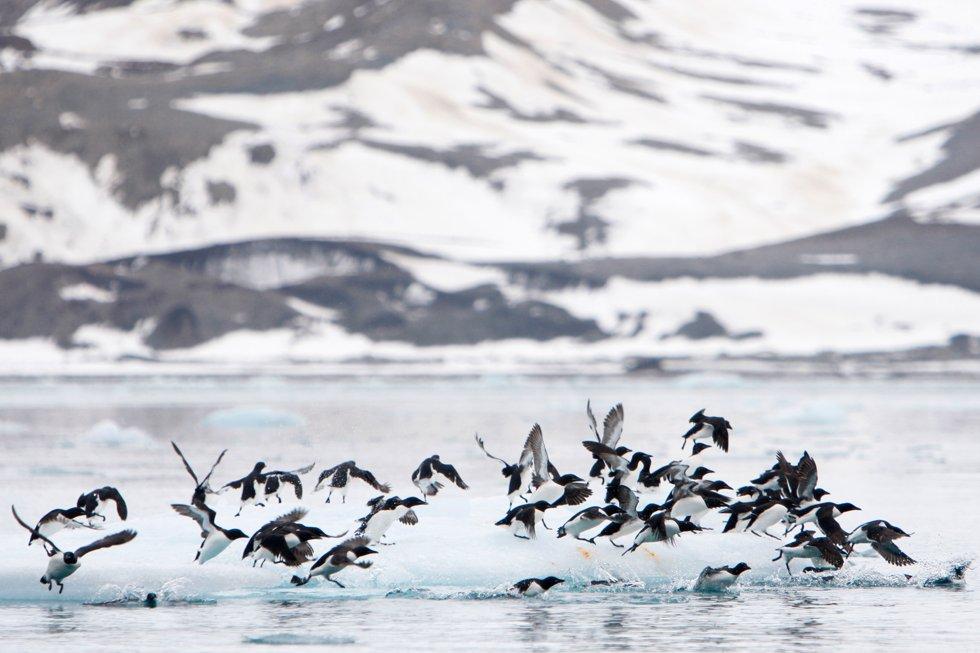Especially in the tropics and the world’s most species-rich, developments have been dramatic. Here the wild animal population is decreasing very quickly.
– The Living Planet Report presents staggering figures and shows that we are facing two acute crises: man-made climate change and loss of natural diversity, said Karoline Andaur, who heads the environmental organization WWF in Norway.
The organization works closely with researchers on the report, which is published every two years.
In this year’s version, it is estimated that the population of wild animals monitored in Latin America and the Caribbean decreased by an average of 94 percent between 1970 and 2018.
Endangered gorilla
If these figures represent developments more generally, today only a small remnant of native wildlife remains in this part of the world.
One species that describes this situation is the Amazonian dolphin. Here, the population has declined 65 percent between 1994 and 2016.
Developments have also been dramatic in Africa and parts of Asia. Africa’s animal population is estimated to have declined by 66 percent.
The population of the eastern lowland gorilla – one of humans’ closest relatives in the animal kingdom – has fallen by as much as 80 percent between 1994 and 2019. All variants of the gorilla are threatened with extinction.
– The natural crisis we are facing is acute and requires urgent action. “We have no time to lose,” Andaur said in a statement.
Loss of habitat
In nature and wildlife assessments, often the focus is on how many animals are threatened with extinction.
The experts behind the WWF report also looked at the situation of animals that are not yet threatened with extinction. The results show how stocks and numbers of individuals are decreasing rapidly.
One of the most important reasons is that animals are losing their habitat. In addition, WWF shows overharvesting, introduction of alien species, pollution, and climate change impacts.
Other researchers have arrived at similar results in the past. One study as of 2017 describes the situation for 177 mammal species. Nearly half have declined sharply and lost more than 80 percent of their habitat since the early 20th century.
United Nations meeting in Canada
In the WWF report, vertebrates have been investigated. Namely, mammals, birds, fish, amphibians and reptiles.
Much of the world’s economy and billions of people depend on nature, says WWF. The organization believes that measures to prevent further loss of natural diversity – as well as restoration of viable ecosystems – should be high on the global agenda.
– The report is proof that we are in the process of destroying the basis of our lives, Andaur warns.
In December, representatives from the world’s nations will gather in Montreal in Canada to agree on a new international treaty on nature conservation. WWF is very hopeful with the agreement.
– Nature’s Covenant is a rare opportunity to change course, repair our broken relationship with nature and create a more sustainable and healthier future for all, Andaur said.
Repeated warning
In Norway too, there are species that are in sharp decline. Among these are gannets, pygmy geese, eels and sea urchins – the second largest fish in the world.
In Europe and Central Asia, animal populations have declined by an average of 18 percent over the last 50 years or so. The decline was smaller than in other areas, and one reason is that many of Europe’s natural areas were lost before 1970.
An important reason why habitats and animal populations are decreasing is that forests are being cut down and new areas are constantly being used for agriculture. This occurs, among other things, in the Amazon rainforest.
Researchers, experts and activists have repeatedly called for warnings about the developments. Some of them use the term “mass extinction” about what will happen.
– I don’t think it’s an exaggeration. Mass extinctions were already taking place, and they were caused by humans, Professor Bob Watson, then Chair of the UN Nature Panel, told NTB in 2017.

“Music maven. Evil pop culture lover. Unapologetic creator. Friend of animals everywhere.”






